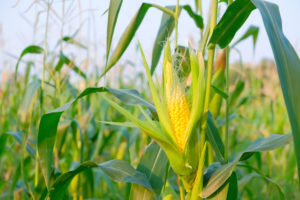
AI Algorithm Improves Crop Yield Prediction

As climate change puts greater and greater stressors on crops, precision agriculture – which pursues lower inputs and higher yields – is a booming market, poised to reach nearly $13 billion by the late 2020s. Technology improvements are at the core of many of the solutions that guide the search for climate-resilient and precision agriculture, and now, a team from the University of Illinois has created a new AI algorithm that can use data to help guide crop management decisions in real-time.
A few years ago, the university undertook an effort called the Data-Intensive Farm Management Project. Through this project, researchers seeded and fertilized over 200 fields in the U.S., South America, and even South Africa at varying rates. These researchers used that data – specifically, data from a subset of Midwestern corn fields – as their starting point. They broke the fields down into 5-meter squares and fed data from the project (including elevation, nitrogen application, seed rate, and more) into a convolutional neural network (CNN). Then, they tasked the neural network with predicting yield.
“We developed methodology using deep learning to generate yield predictions,” said Nicolas Martin, co-author of the research and an assistant professor of crop sciences at the University of Illinois, in an interview with the University of Illinois. “It incorporates information from different topographic variables, soil electroconductivity, as well as nitrogen and seed rate treatments we applied throughout nine Midwestern corn fields.”
“We’re trying to change how people run agronomic research,” Martin continued. “Instead of establishing a small field plot, running statistics, and publishing the means, what we’re trying to do involves the farmer far more directly. We are running experiments with farmers’ machinery in their own fields. We can detect site-specific responses to different inputs. And we can see whether there’s a response in different parts of the field.”
The researchers compared four forms of the neural network’s output to some of the more common yield prediction tools, including linear regression and a random forest algorithm. They found that the neural network’s outputs predicted yield better than those tools by up to 68% and 29%, respectively. With these results, Martin is confident that neural networks can help illuminate a field that is often challenging to predict.
“We don’t really know what is causing differences in yield responses to inputs across a field,” Martin said. “Sometimes people have an idea that a certain spot should respond really strongly to nitrogen and it doesn’t, or vice versa. The CNN can pick up on hidden patterns that may be causing a response.”
About the research
This research was published as “Modeling yield response to crop management using convolutional neural networks” in the March 2020 issue of Computers and Electronics in Agriculture. It was written by Alexandre Barbosa, Rodrigo Trevisan, Naira Hovakimyan, and Nicolas F. Martin and can be accessed here.
To read the University of Illinois article highlighting this research, click here.
Related Items
New Algorithm Tackles Everything from Insects to Earthquakes
Digital Agriculture Program Yields Promising Prospects
Biotech Crop Discovery Poised for Fast Growth Thanks to Big Data
Rice Genome Data Mined to Feed a Hungry Planet






























